My objective in this case was to elevate the neck's angle to make it a bit more upright. The double curve (representing the mouth of the fish) permits the right side of the base to be significantly higher than the left, while still providing enough space for the controls.
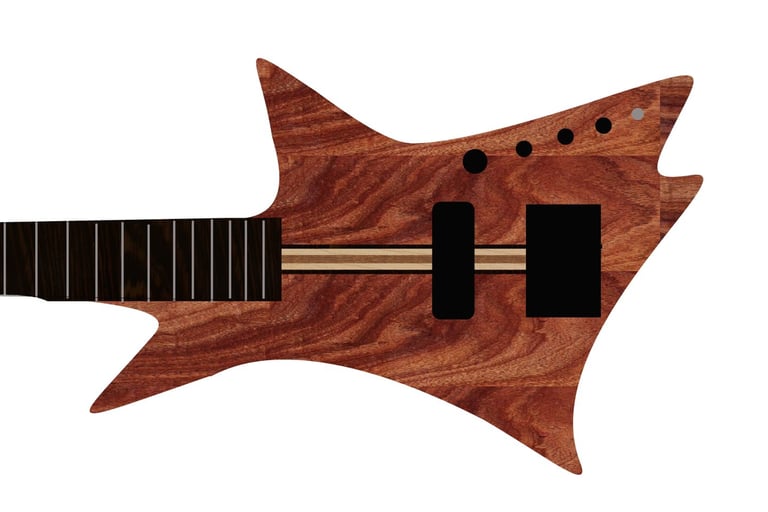

Everything starts with Design....
Prototyping
I was able to find a damaged 2 x 4 for $1.75!!! Add a little glue and some jigsaw work and I have a working prototype to verify my design works.
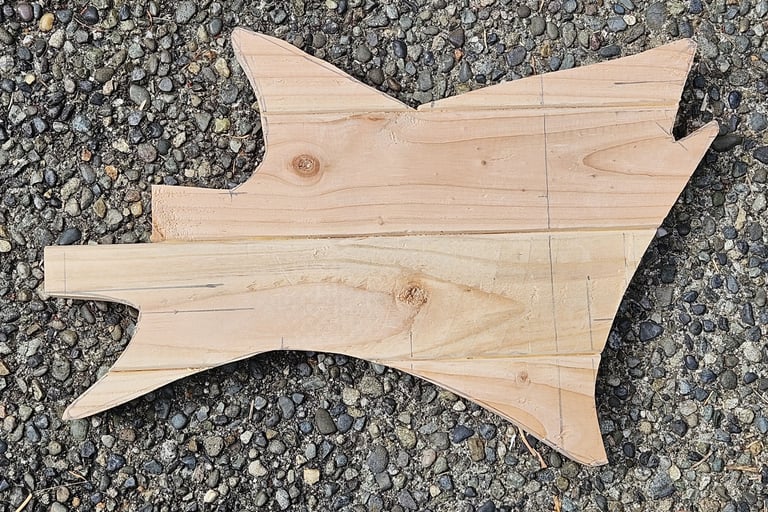

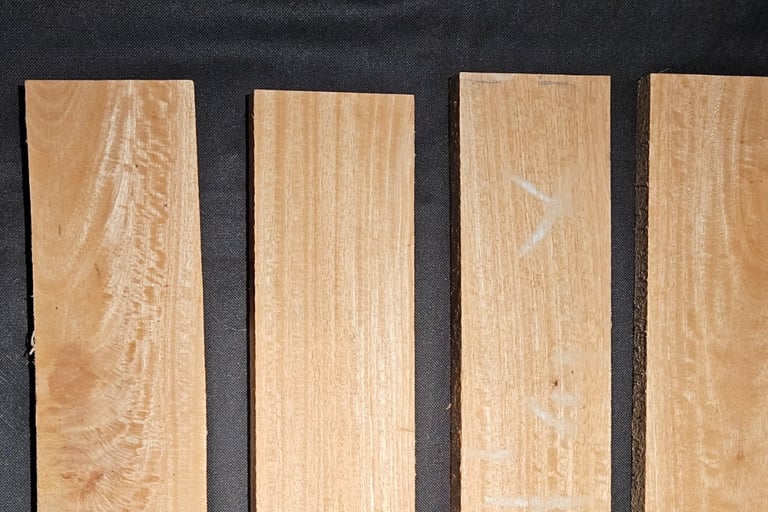

Great basses start with great wood. This is some Mango from Maui I will use to make a body.
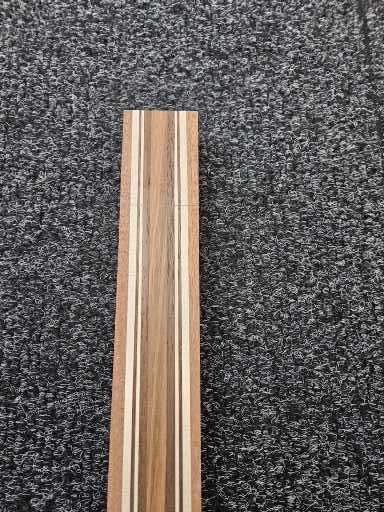

Here's a close-up of an unfinished neck after the glue residue and differences in lamination heights have been planed off. I used Jatoba in the center for strength and stiffness, then added Peruvian Walnut and Maple for contrast, and African Mahoghany on the edges.
A rough-finished neck and unfinished Sapele Mahoghany body pieces.
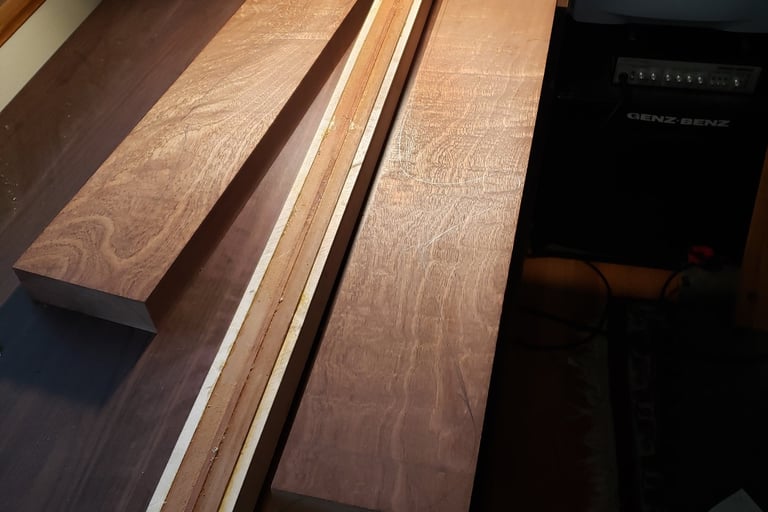

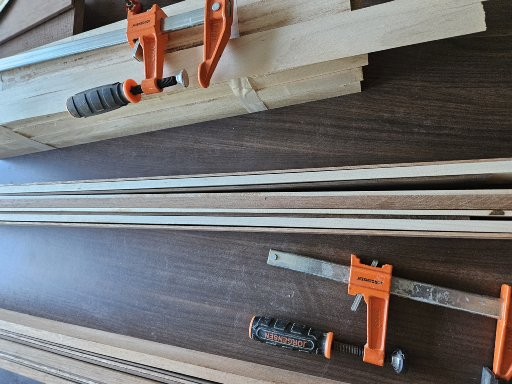

Before it becomes a neck, it starts out by being a few thin slices of wood. Most of my necks have Jatoba in them because of its extraordinary stiffness and stability. This one is typical, using Jatoba as the thickest lamination in the center.
brian@millerbasses.com
or text me at (206) 669-8665